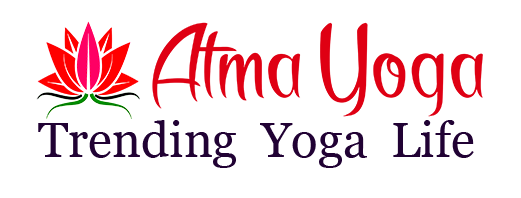Suryanamaskara
One of many all-rounder yoga workout routines is the 12-step salute to the sun god. The Sun Salutation yoga pose is really helpful for practitioners of all ages and particularly for those who can not dedicate a whole lot of time to their yoga routine. Why this pose is extremely appreciated is that it strengthens many of the muscles, in addition to the respiratory system as well.
In reality, the Suryanamaskara is a sequence of twelve yoga positions, linked collectively by a flowing movement and accompanied by some deep breathing exercises as well. Every one of the twelve positions contributes to stretching a unique part of the physique and completely varied muscle groups. Moreover, it helps to increase and contracting the chest so as to regulate the respiratory system.
The Steps Of Practice
- Pranaamasana – Prayer pose
- HastaUttanasana – Raised arms pose
- HastaPadasana – Hand to foot pose
- AshwaSanchalanasana– Equestrian pose
- Parvatasana – Mountain pose
- AshtangaNamaskara – Eight point (parts) Salutation
- Bhujangasana – Cobra pose
- Parvatasana – Mountain pose
- AshwaSanchalanasana – Equestrian Pose
- HastaPadasana – Hand to Foot Pose
- HastaUttanasana – Raise arm Pose
- Pranaamasana – Prayer pose
SuryaNamaskara or Sun Salutation is a set of 7 asanas done in 12 steps out of which 5 are repeated, ideally performed at sunrise as a worship to Sun God. For each of the 12 asanas, there is a breathing pattern, which has to be followed.
- Pranaamasana – Prayer pose (Exhale)
Stand on your feet together and hands placed together, arms touching and fingers pointing upward in front of the chest.
- HastaUttanasana – Raised arms pose (Inhale)
Stand straight with your feet together and stretch both arms above head and arch your body backwards
(As you inhale deeply, raise your hands slowly over your head, and bend backward so far as you can bend, along with tightening your buttocks. Maintain the pose for 3-5 seconds.)
- PadaHastasana – Hand to foot pose (Exhale)
Stand on with your feet together and bend down in front without bending your knees. Place your hands on either side of your feet, aligning it with legs. Touch your arms on the ground and head on your legs.
(If you are not able to reach the ground, go as near as you can and extend little by little every day. Definitely you’ll touch once you progress)
- AshwaSanchalanasana– Equestrian pose (Inhale)
Place your fingertips exterior to your feet on the floor and inhale slowly as you bend your knees. Slide your right side foot backward so far as you can, note that your right knee should be an inch or so off the ground, (a lunge place). Place the left foot between the palms and lift your head upward as much as possible, as a backward arc.
- Parvathasana – Mountain pose (Exhale)
Bring the right leg next to left and place your hands a shoulder width apart on ground raise hips and move head between arms so that body is in a triangle shape (an inverted “V” shape).
- AshtangaNamaskara – Salute with eight parts or points (Inhale/Exhale)
Just before exhaling, slide back your left foot on par with your right foot while your whole body weight is supported by your palms and toes then straighten your legs so as to form your entire body as a flat plane (such a way that all eight limbs are touching the floor. Eight limbs are toes, knees, hands, chest and chin). Exhale. Maintain the straight after exhale for 3 – 5 seconds.
- Bhujangasana – Cobra pose (Inhale)
Lay down on your stomach, keeping the legs and feet together. Place both the hands, shoulder width apart in front of your chest, lift your body above naval, balancing it on hands and turn your head upwards. Hold for three to five seconds.
- Parvathasana – Mountain pose (Exhale)
Bring the right leg next to left and place hands shoulder width apart on ground raise hips and move head between arms so that body is in a triangle shape (an inverted “V” shape).
- AshwaSanchalanasana– Equestrian pose (Inhale)
Bring the right leg backwards. And touch the right knee on the floor. Place the left foot between the palms and lift your head upwards.
- PadaHastasana – Hand to foot pose (Exhale)
Stand on with your feet together and bend down in front without bending your knees. Place your hands on either side of your feet, aligning it with legs. Touch your arms on ground and head on legs.
- HastaUttanasana – Raised arms pose (Inhale)
Stand straight with your feet together and stretch both arms above head and arch your body backwards
- Pranaamasana – Prayer pose (Exhale)
Stand on your feet together and hands placed together, arms touching and fingers pointing upward in front of the chest.
SuryaNamaskar a is an amazing exercise which cures a lot of diseases like asthma, backache, bronchitis, constipation, diabetes, low blood pressure, obesity, skin diseases, and tonsillitis. It also provides most of the key health benefits of yoga in a very condensed package. The visible benefit is the workout it provides for the muscles, the joints, ligaments and the skeletal system by improving posture, flexibility and balance. Hence it is highly recommended for dance practitioners and students as well.
Precautions:
People suffering from sciatica pain, Hernia, pain over the lower part of spinal column, high BP, should not practice SuryaNamaskar. They can practice after these diseases are cured either through medications or through practicing other yoga asanas.





